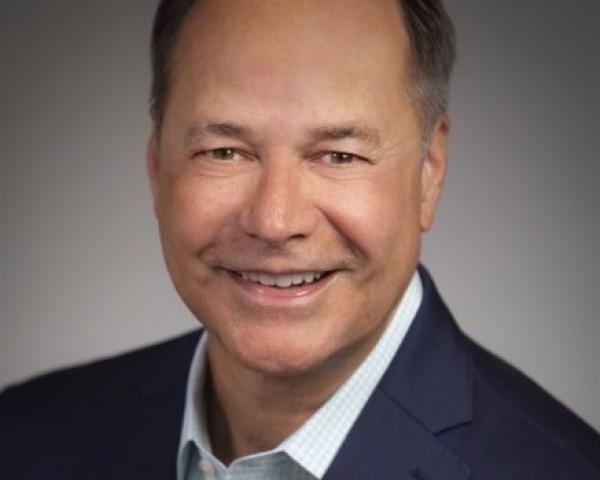The end of the year is celebrated with our most cherished holidays, special food, gift giving and some downtime to reflect and recharge for whatever lies ahead in the New Year. It’s somewhat cathartic to think about what’s likely and possible but even more productive to apply some research and rigor to support predictions, regardless of their eventual accuracy.
In the business world, it’s the time of year for pundits to look ahead and around corners to make their predictions while forecasters highlight financial models and articulate what to expect, whether at micro or macro levels.
The P&C industry, by design, looks back to look ahead when it comes to rate making and risk modeling. Much of the 2024 story will be told throughout the first half of 2025 as earned premiums and other lagging financial results filter in and are officially reported. Considering the last three years of insurance-in-crisis, with new signs of underwriting profits returning, it’s refreshing to look forward to 2025.
It’s also a good time to mix in a sprinkle of wishful thinking and optimism. So we will call this our 2025 P&C “Wish List,” knowing full well that moving the needle in insurance is like turning a cargo ship.
- Rates stabilize, and competition begins to warm up, adding market capacity. As personal lines auto is forecast to be around 98.4%, per S&P, there is renewed optimism about profitability. Reinsurance rates have stabilized, and confidence in some of the most challenged markets in Florida and California is pointing in a positive direction, with insurers returning to write business. While E&S lines have absorbed displaced capacity, these encouraging signs of stability are welcome news, despite consumer and small business premium pain and protection gaps that will extend in the new year and beyond.
- Building trust takes center stage, and insurers act. After the fallout and still unfolding story from the murder of United Health CEO Brian Thompson, the broader insurance industry faces cynicism and distrust. High premiums, constrained access, widening protection gaps and obscured corporate identities are contributing to toxic sentiment. As lawmakers take aim at premiums and shrinking capacity, calls for regulatory changes are gaining momentum. Insurers must look for ways to upgrade their image, ensure fairness and find balance to risk transfer economics. Predict & Prevent support, discounts for loss-avoidance measures, such as smart home water leak detection and telematics for driver safety, are just two examples that need a boost.
See also: AI in Insurance: 2025 Predictions
As AI is expected to dominate over the next decade, current usage to validate claims is proving to be highly controversial and viewed as unfairly denying claims. What if AI in claims was designed to actually “look for coverage”? In other words, the art of claims adjusting has always been founded on the principle of matching the loss circumstances to the insurance (policy) contract to compare coverage and the extent to which it is applied. Although the “coverage investigation” process may not be a consumer friendly phrase, savvy adjusters turn it around and begin policyholder conversations by assuring them the process is to look and find available coverage through all the legalese. AI positioned as a fair and neutral source, scanning for protection and certified by a professional, might be a concept worth developing. Taken a step further, AI could also optimize a claim payout by applying the age-old standard of, pay exactly what is owed – not a dollar more or dollar less. Either way, it is much about the positioning of AI and how company standards and best practices can be a strength rather than a liability for insurers.
- New products and solutions launch to fill the protection gap. One way to fill the protection gap is with new products like parametric insurance to help soothe the sting from out-of-pocket expenses. Embedded insurance models are a perfect fit for add-on and upselling to fill the gaps borne by premium unaffordability, market restriction or more limiting policies.
- ClimateTech takes off. Technology has always been the answer when it comes to solving daunting problems. Better risk modeling, improved predictions and ways to determine how best to apply resources before and after large events while influencing building and infrastructure resiliency are all top of mind.
- Market reforms pay off and spread. In some of the most challenged markets, especially California and Florida, new risk models and litigation reforms are beginning to show promise. In California, several carriers have announced plans to re-enter. In Florida, the state-run plan, Citizens, is already depopulating risk, a healthy signal, as commercial carriers take out and write risk. There are many lessons learned and a long way to go.
- Legal abuse/social inflation comes under fire. The degree of legal abuse and growing awareness of litigation financing, nuclear verdicts and the overall impact to premiums gains higher recognition. Efforts to pump the brakes and level the playing field are sorely needed. It will not be easy, and the insurance industry needs to do more to avoid attorney representation and litigation while pushing harder for legal reforms.
- Predict & Prevent takes another step forward. Numerous pilots and programs have been launched, on workplace safety, loss detection in homes and early warnings at construction sites, to name a few. Pilots convert to in-market reality and with more emphasis, enticing discounts or trade-off from sole risk transfer insurance.
- Telematics doubles down on driver safety, not just premium accuracy. The main thrust of auto telematics in personal lines has been a lot about switch and save, with untapped potential to guide and promote driver safety. Distracted driving is getting attention, and wider-adoption of crash detection is on the horizon. The compelling potential for application to incident management and emergency response will make broader adoption inevitable.
- AI moves from concept to reality, beyond testing and basic uses cases. AI has probably garnered more attention than all other technology combined. Insurers are walling off and limiting access while concentrating on straightforward usage, e.g., document summarization. Conversational AI is exciting yet concerning to most as even a moderate replacement of human activity. As testing proves or deprioritizes, insurers are poised to release and build toward an AI future. The training wheels will come off inevitably.
- M&A increases among the top 50 P&C insurers. Saved for our final prediction: At least one announced deal is foreseeable as some carriers seek to gain scale and market share while others may wish to exit, whether in commercial auto, home lines or elsewhere. Looking at the top 10 U.S. carriers, the race is most heated among four: State Farm, Progressive, GEICO and Allstate. That is most likely to continue. Look for others to strive to keep pace through acquisitions, e.g., Aviva’s purchase of Direct Line in the U.K.
See also: Customer Engagement Trends for 2025
Aside from predictions, it is certain that the P&C industry faces headwinds: unprofitable commercial auto, a battered homeowner line, the mounting “brain drain” talent loss, lingering inflationary pressure, growing social inflation, a climate exposure wild card and more. Higher premiums are masking expense ratios at present, and stability will once again reveal demand for efficiency gain through automation and insurtech innovation, stymied over the last 18 months.
In any case, 2025 will begin on stronger footing and is poised to be more profitable and competitive: characteristics that are foundational to our P&C Wish List.









